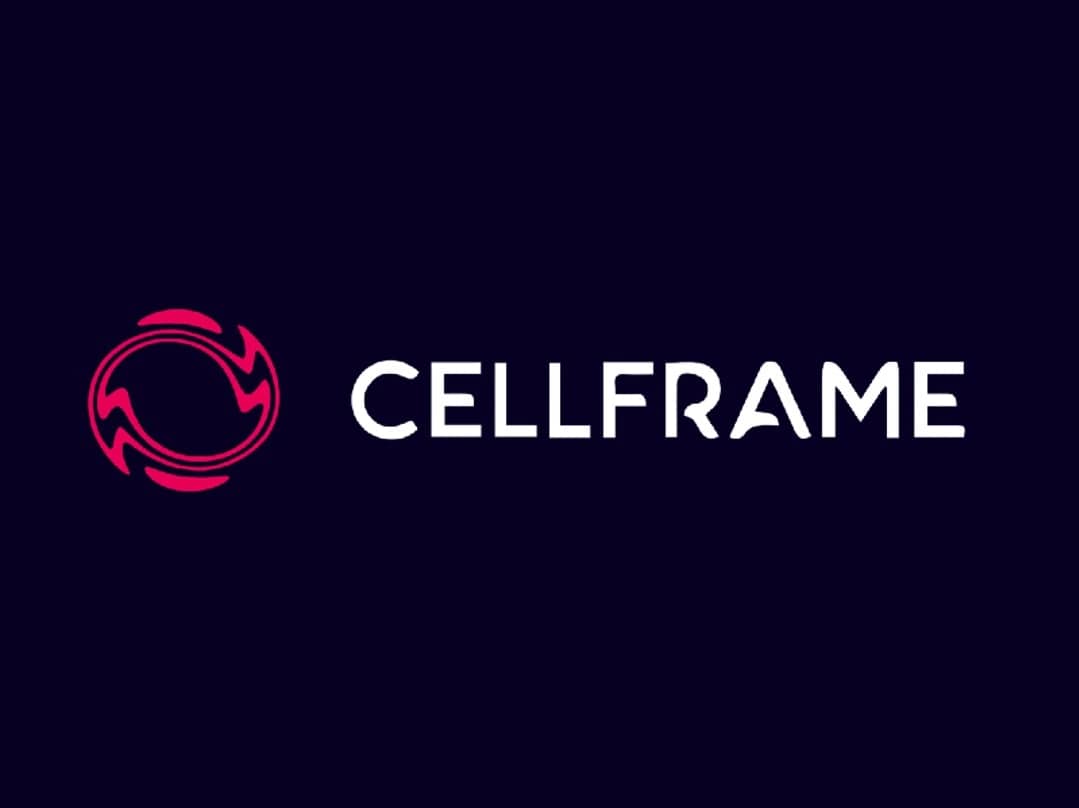订阅 wiki
Share wiki
Bookmark
Cellframe Network
Cellframe Network
Cellframe (CELL)(于 2021 年发布)是一种 ERC-20 原生加密货币代币,发行于以太坊 (ETH) 区块链上,旨在 Cellframe 生态系统中作为实用数字货币,为 Cellframe 网络提供动力。Cellframe 网络是一种抗量子攻击的 Layer-1 网络基础设施,旨在促进、保护和扩展区块链之间的跨链传输。[1]
公司
Cellframe Network 成立于 2017 年,是一个面向服务的区块链平台和网络安全生态系统,位于加利福尼亚州旧金山。该组织旨在解决区块链协议问题,通过提供计算机安全、分布式账本技术和具有量子安全加密的网络基础设施。该解决方案允许 CellFrame 网络上的节点运营商支持跨链交换和第 1 层链之间的桥梁,从而使资产可以自由流动,同时通过促进此过程赚取 $CELL 代币费用。
该公司拥有 11-50 名员工,他们努力确保 Cellframe 从头开始构建,不使用第三方代码。Cellframe Network 的设计使得所有基本元素都使用纯 C(编程语言)构建,并在其上使用 Python 绑定,以便任何人都可以使用 Python 的便利性和 C 代码的效率进行编码。[2]
创始人 & 团队
团队
CellFrame团队自2017年以来一直在构建CellFrame网络。项目负责人是经验丰富的企业家和开发人员,位于俄罗斯。这些地下互联的、目标明确的人员构成了Cellframe的团队成员,并一直在指导Cellframe的生态系统,以追求其作为区块链的网络基础设施。在Dmitry Gerasimov(首席技术官)、Evgeny Grishakov(联合创始人)和Sergey Sevantsyan(首席执行官)的领导下,Cellframe网络(由其原生代币($CELL)驱动)正努力成为现有区块链项目和其他潜在区块链项目的网络基础设施。
| 核心团队 | 职位 | 地点 | 简介 |
|---|---|---|---|
| Dmitry Gerasimov | 首席技术官 | 新西伯利亚 | 网络安全专家,量子极客,前两家商业VPN的首席技术官。 |
| Evgeny Grishakov | 联合创始人 | 俄罗斯 | |
| Sergey Sevantsyan | 首席执行官 | 莫斯科 | 国际主题演讲者,在信息通信技术领域拥有25年以上的经验,以太坊合作伙伴。 |
CellFrame:CTO 的兴趣
Dmitry Gerasimov 是 Cellframe Network 的联合创始人,并在其生态系统中担任首席技术官。他的教育背景是物理学,但在大约 20 年前离开了科学领域,转而从事软件开发。基本上,在他的冒险过程中,他更专注于系统软件开发,但在过去的 20 年里,他拥有全栈经验。Dmitry 于 2007 年创立了一家外包开发公司,该公司于 2017-2018 年转型为区块链初创公司。
拥有物理学教育背景使 Dmitry 深入了解了量子威胁。用他自己的话说,关于量子威胁,他说:
我知道,这是真实的,而且我知道为什么它是真实的
- Dmitry Gerasimov
在此之前,他获得了大约 7 年的网络开发经验,并拥有一些带有自己的 C(编程语言)框架的代码库。
这成为 Cellframe 的虚拟专用网络 (VPN) 服务的基础。该代码还用于区块链和 Cellframe 的后量子密码学实现。[3]
概述
Cellframe 是一个面向服务的区块链网络,它在硬件附近构建,可在任何机器上提供使用效率 - 从超级计算机到智能冰箱。 Cellframe 区块链项目代表了后量子时代即将到来的挑战的最佳解决方案的融合,同时为现有系统提供新的进步理念。
后量子加密是默认的,以提供最高级别的安全性。重要的是要注意,Cellframe 框架不是一项未经证实的新本质或技术发明;Cellframe 只是使区块链成为应该被称为基础设施的方式。
Cellframe 网络开发了基于 100% 原始 C 代码的新一代抗量子区块链,该代码针对高负载进行了优化,并融合了现有区块链技术的所有顶级现代功能。
Cellframe 的诞生是为了应对挑战,包括生成新信息的动态以及跟踪增长动态的需求;量子计算的全球增长以及带来功能性量子计算机的需求。
Cellframe 的愿景是一个具有根本广泛功能的区块链平台,能够构建和交付各种高需求、高负载、高安全性的服务。Cellframe 是构建支持新兴 Web 3.0 商业模式的服务的零级协议,不仅增加了所需的性能和集成,还增加了后量子级别安全性的完整基础。关键创新是分散式服务、新的精细分片实现(提供性能和弹性)以及低级架构(性能和安全性)以及通过设计实现的高度可修改性(灵活性)。 通过设计,Cellframe 的架构是具有双层分片的结构。第一层(异构层)可以启动可定制的子链和代币。在第二层(同构层)上,子链组织在单元格中。由于互操作性功能,CellFrame 旨在构建一个服务生态系统,其中每个应用程序(或分散式应用程序 (DApp))都有机会以 p2p 方式与另一个应用程序交换信息。
Cellframe 的使命是创建一个安全的分散式环境,维护互联网的自由,使人们在日常使用中更加自信和冷静,因此 Cellframe 不是区块链协议,而是可以概括为构建区块链生态系统的基础设施层。所有现有的区块链解决方案都可以转移到 Cellframe,并获得以前无法达到的性能和安全级别。
简而言之,Cellframe 网络是一个区块链项目,代表了后量子时代即将到来的挑战的最佳解决方案的融合,同时为现有系统提供新的进步理念。
我们开发了基于 100% 原始 C 代码的新一代抗量子区块链,该代码针对高负载进行了优化,并融合了现有区块链技术的所有顶级现代功能。
CellFrame的特性
区块链互操作性
CellFrame (CELL) 网络通过使用 Cell 桥连接到公共区块链,从而提供互操作性。用户可以将多个区块链连接到单个系统,包括公共区块链的集成。
分布式 VPN 和内容分发网络 (CDN)
免费使用(基于 torrent 的使用逻辑,带宽共享经济),量子安全加密,抗 DPI(人工智能驱动的算法保护您的数据免受深度包检测(例如金盾工程等)),吞吐量仅受用户周围节点数量的限制,流量管理系统(流量不走最短路径,而是走最快路径)。CellFrame 的虚拟专用网络 (VPN) 即将推出,而其 CDN 已经在开发中,并将按照生态系统计划很快推出。
区块链框架
用于在Cellframe网络中启动完全可定制和可扩展的子链的开源框架,在Cellframe生态系统中设计上具有可扩展性和互操作性。
镜像链
镜像链解决方案是为了保护公共和私有区块链免受终端攻击而采购的,发布的目的在于不影响区块链性能,帮助在发生攻击时恢复其最新状态,并可用于互操作性功能。
第二层解决方案
Cellframe网络的第二层功能建立在Cellframe Cells的优势之上。这些Cellframe cells充当现有公链的第二层解决方案。由于Cellframe网络可在原生Cellchains之间互操作,因此需要资产和价值从以太坊(ETH)、Polkadot、Cosmos和Solana等其他区块链自由流动。为此,Cellframe网络设计了一系列新的Cellchains,允许将来自异构区块链的资产保存在具有分布式密钥管理的钱包中,然后包装成可在任何Cellchain上交易的代币。[4]
音频/视频流媒体
Cellframe网络框架包含音频和/或视频流媒体功能,通过利用CellFrame的量子安全加密通道,实现跨生态系统网络的音频和视频内容流式传输协议,从而不影响用户体验。此功能目前仍在开发中,已为Cellframe用户准备了大约70%。
边缘计算
最后,Cellframe网络的功能是其前瞻性的边缘计算区块链功能。此功能(即边缘计算)是一种雾计算形式,在智能手机和笔记本电脑等边缘设备上执行,尽可能靠近任务源。
CellFrame的解决方案
以下是CellFrame网络提供的实际解决方案:
可变性
通常,区块链开发者会尝试保存每一个字节的信息,因为区块链的大小通常不是关键优先事项,因为磁盘空间的价格不断下降。由于其灵活的结构,CellFrame 不受此限制,因此可以在钱包地址、事件头、签名和公钥结构、网络协议以及其他需要软件识别以进行处理的共享结构中添加更多字节字段,这得益于 CellFrame 的可变性解决方案。
更多字节字段使我们能够动态创建更多交易类型、签名、事件、钱包、数据和其他数据结构,而无需完全的代码重构、区块链结构更改、新的钱包类型发布等。可变性产生不同版本之间的向后兼容性,并防止版本不兼容。
安全性
CellFrame的安全主要通过其可变性实现
- 它不依赖于任何特定的签名算法,并且由于多客户端使用
- 在单一共识上。如果用户使用一种特定的算法,那么该算法的稳定性将决定整个系统在加密破解方面的稳定性。由于Cellframe的网络开始使用量子计算机和量子加密的概念,因此有必要创建一个不依赖于此因素的系统。与共识机制的类型类似
- CellFrame的任务是创建一个系统,用户可以快速更改当前单元格或创建新单元格中的共识算法。整个CellFrame系统在其架构中几乎没有第三方代码,这也提高了整体安全级别。
默认情况下,这意味着所有代码都已由CellFrame的工程师编写,而没有使用第三方模块
- 没有已知的漏洞和黑客方法。
可扩展性和性能
可扩展性和性能是CellFrame网络的功能亮点。Cellframe的节点结构可扩展性很强,仅受硬件能力的限制。由于我们从头开始使用底层优化和组织,因此我们构建了具有极佳并行性的高吞吐量系统。与硬件能力相关的生产力增长曲线几乎是线性的。节点能力计划能够处理多达十个签名而没有任何延迟,如果配备了足够数量的CPU、RAM以及它们之间良好建立的流量分配,甚至可以处理高达100千兆位的流量。
事件驱动的架构使这一切成为可能。存在一种I/O分组(即输入/输出),以使所有相同的操作以非阻塞模式逐行执行。这使我们能够在操作系统和硬件级别对其进行优化,并且由于其在一个地方的分组,可以进一步优化I/O。反过来,它允许使用零拷贝技术(或类似技术),从而大大减少了所谓的“上下文切换”的负载,没有它,就不可能以高速工作。
生态系统
1. CellFrame Framework
Cellframe是一个框架,用于通过密码学保护的区块链集成。Cellframe生态系统的这一重要组成部分(即Cellframe框架)允许将不同的区块链(例如以太坊(ETH)、Polkadot和Cosmos等)连接到一个系统中。它为创建来自多个区块链的智能合约提供了空间。该框架构建了一个用户网状网络,以维护互联网的隐私和自由。创建具有私人用户访问权限的隔离专有企业解决方案。CellFrame框架还提供最先进的加密技术,以在全球范围内保持最高级别的安全性。
框架优势
I. 可扩展性
最初的分片实现,正如在Cellframe中强制执行的那样,允许用户在每个Cell(分片)中启动具有可变共识类型的区块链/DAG子链。
II. 区块链乐高积木
此框架特性允许用户使用 Cellframe 的 SDK 创建他们自己的区块链解决方案。Cellframe 的支持旨在为用户在分布式账本技术 (DLT) 需求的每一步提供帮助。
III. Python over C
随着 Python (编程语言) API 的开放,用户可以使用 C 代码内核的性能构建简单而优雅的区块链解决方案。
区块链服务
CellFrame网络已经证明,区块链的未来是提供服务,范围从金融到技术、教育(例如Everipedia)和医疗服务。网络架构的关键要素之一是创建和管理去中心化的互联网服务。智能合约无法与操作系统的资源交互。CellFrame服务可以使用计算能力、互联网通道或磁盘空间,并在没有第三方的情况下执行业务逻辑。区块链服务没有所有者地址。为了降低盗窃风险,服务现金流在提供商之间分配,没有人拥有包含所有资金的合约的私钥。
区块链服务的开发可以与构建Web脚本和其他系统服务相比较。它很容易,并且不需要聘请昂贵的区块链工程师。
量子威胁
量子威胁是一个真实的现实,对即将到来和当前围绕区块链和 DeFi(去中心化金融)的发展构成挑战。拥有逻辑量子比特的量子计算机将在未来 10-15 年内出现。美国国家安全局(NSA)和国家标准与技术研究院(NIST)自 2015 年以来一直在为此做准备,并制定后量子密码学的标准。
默认启用后量子加密
CellFrame已成功实施了几种抗量子签名,包括美国国家标准与技术研究院后量子密码(PQC)竞赛第二轮的决赛入围者,并计划在2021年之前实施更多。
加密可变性
由于目前对于后量子签名是否真正具有抗量子性的不确定性,加密可变性是构建真正抗量子系统的唯一选择。CellFrame 预计人类发明的数字签名算法不会超过 65536 种。最初,生态系统选择了最有前景的后量子算法,包括 NewHope、NTRU、Frodo、SIDH 等。我们使用的最有趣的算法之一是 Picnic
- 一种零知识后量子签名。默认情况下,CellFrame 使用 Crystal-Dilithium 数字签名。
量子密钥
量子威胁的这个重要特性旨在实现。根据CellFrame的技术路线图,计划在2022年第三季度实现量子密钥交换。
CellFrame 技术
CellFrame 技术包括生态系统的网络、区块链结构的基础设施以及如下所述的共识机制:
CellFrame 网络
CellFrame 网络由四个主要组件组成:
- 多方计算 (MPC) 协议,允许跨链桥
- 后量子 layer-1 区块链,允许高安全性链上结算,适用于大额货币价值
- 每个单元(分片)中具有可变共识类型的子链,确保生态系统具有高度可扩展性。
- Layer-1 治理模块,允许利益相关者投票决定整个生态系统的经济激励和参数变更。
CellFrame Core
CellFrame网络使用的核心代码基于完全原创的C代码,并采用面向对象编程。其他所有使用的内容也是原创的,例如HTTP协议实现、密钥交换、流多路复用以及VPN、CDN或边缘计算等底层服务。CellFrame的工程师团队坚持这种方法,以排除现成的黑客工具并加快网络事件处理。
区块链结构
CellFrame的基本思想是多个子链,包含同基因细胞(也称为分片)内的Plasma(任何区块链元素)。ZeroChain是单行plasma,可在所有单元格上运行并保持单元格间的通信。CellFrame区块链结构将以下特性融入其技术中:
I. 区块链节点
节点是去中心化网络的基本元素。 大多数节点在系统中具有相同的权限,因此它是一个“单级网络”。 在 CellFrame 网络中,节点可以通过网络共享服务。 服务可以使用自己的标识符并共享区块链数据、白名单数据、流通道和其他 Cellframe 网络功能。
由于一切都是用相对底层的语言开发的,我们可以共享创建 VPN 和音视频流等服务的工具,因为 CPU 和内存使用效率很高。 后量子算法非常繁重,为了优化它们的使用并实现高吞吐量(1+ M TPS),我们必须使用汇编器优化。
II. 节点组织
节点组织借助白名单执行
- 一个包含每个节点的上行链路的节点列表,该列表从一个节点复制到另一个节点。上行链路本身是一个节点,它在首次连接时请求整个白名单,并且从它获得的非区块链数据被认为是首选的。这意味着,如果下游节点发送的白名单与父节点冲突,则优先考虑父节点。但与此同时,需要与网络中的所有其他节点进行列表比较。如果存在IPV6白色地址,则始终可以与任何其他节点进行点对点连接。新节点连接期间的上行链路很容易确定——白名单从所谓的“种子节点”(中心节点)下载,默认情况下从这些节点请求数据,然后跟踪到每个位置,结果表明哪条互联网路由最短,响应时间最短。因此,这些节点将构建成一个分层方案,大致重复真实互联网的层次结构。[5]
以下算法用于将节点合并到网络中:
- 尝试与根节点连接
- 连接后,向它们请求节点白名单及其IP地址
- 根据其白色IP地址跟踪最近的节点,选择最近的节点
- Ping它们并尝试与它们握手,以测量更低的延迟和更高的速度
- 连接到2-5个最佳节点
- 第一个节点根据为其生成的密钥为您提供新的ID。
- 与上行链路节点同步区块链
- 请求地址,将您节点的公钥和服务价格列表广播到
- 零级区块链中
- 密钥在区块链中被接受后
- 节点可以共享服务。
CellFrame 共识 - 零级(零链)
Cellframe 网络在主链上采用基于工作量证明的共识机制,在分片的燃料链中,CellFrame 使用所谓的零级(或零链),这是一种改进的(权限证明)PoA,它确保第一个区块仅包含一个带有通用元数据和一组根公钥的数据。创世区块后的每个数据都必须使用根密钥(创世区块密钥)签名。这个零链确保节点奖励的公平性,并使基于哈希率的攻击更难执行。Cellframe 还使用抗 ASIC 的哈希函数,因此每个人都可以使用其 CPU 和 GPU 资源参与挖矿过程。
提出该系统的动机是希望创建一个可用于独立、去中心化应用程序以及企业解决方案的系统。真正的去中心化服务和应用程序可以交换微交易,而不会使系统过载。由于内置的支付系统,它比智能合约更便宜,换句话说,更便宜、更安全。
除了前所未有的垂直和水平性能、可变性和对开发者友好的方法外,CellFrame 还旨在通过实施减少错误成本的工具来实现这一目标。
- 任意行为。从一开始,该系统就结合了创世证明(<1% 或总区块链共识)和权益证明(高达 91% 到 99%)共识机制。
节点数据处理
CellFrame上的节点处理从“互联网”开始,然后这种连接以一种模式从客户端进行到节点,该模式描述为 – C–0, C–1, C–2,等等。之后,连接被分配给某个worker,也描述为w–0, w–1, w–2,等等。
worker的数量是严格恒定的,通常等于系统中处理器的物理数量。相应地,worker是由处理器严格拥有的独立线程,即完全在其上执行。
这使得系统驱动程序能够确定进程正忙于网络操作,并严格在此处理器上从网卡生成中断,从而显著加快了1-4 Gbps以上速度的处理。
交易结构
每个交易内部都有一套CellFrame技术方案流程。开始是对来自其他Cell的余额的声明,该声明由至少三个随机选择的主节点或来自ZeroChain的代币验证副本进行验证。如果交易发送到另一个Cell,则发送方的Master节点验证传出交易,而接收方的Master节点验证接收方的Master节点验证传入交易。就像一家银行的客户向另一家银行的客户发送资金一样。每笔交易应至少有三个输出:
- 一个给接收者,一个给佣金(可以为零),一个给找零。输出也可以是开放的,不仅对地址开放,也对使用封闭环签名的一次性密钥开放
- 也称为零知识交易。
分片
在CellFrame网络中,分片技术被提议为将整个区块链分解为特定的“分片链”分片(单元)。这些分片链的组成方式是,所有相同的帐户信息都存在于一个分片链中。分片的大小可以受到限制,例如1Gb。分片将与拓扑结构相关联,而拓扑结构又与实际的网络基础设施相关联。因此,默认情况下,命中所需特定分片是由其网络邻近性决定的。如果需要,用户可以自己定义分片,或者默认请求创建一个新的分片。
然而,过度拥挤的分片可能会拒绝新成员注册。所有分片请求都通过零级区块链内的消息进行。所有分片事件都分两个阶段进行:声明和公告,两者之间至少间隔X个区块。对于Cellframe来说,这意味着至少10'000秒的时间(如果网络未加载,则可能更多)。声明可以由主节点或根节点发送。因此,如果有人想成为主节点,他/她必须将请求发送到任何主节点内存池,然后将其呈现给根节点。
通信和网络协议
所有通信都使用DAP SDK框架执行,这是一个事件驱动系统,能够在单个线程中处理大量I/O(输入/输出)操作。默认情况下,它启动的线程数等于CPU核心数,并将它们专门分配给处理核心。流行的Web服务器Nginx也使用相同的技术,这使其能够处理和提供大量的并发连接。我们期望获得相同的收益。
区块链保险
- 镜像
零链的成功运行不需要代币实现,因为它基于创世证明共识,并且没有传统意义上的挖矿。所有关于区块形成的决策都由最初授权的节点做出,并且该链仅存储必要的技术信息,不存储地址余额,因此不影响已启动的Cell的安全性。网络中的所有重要交互都发生在Cell内部以及Cell间的通信中。诸如资产转移操作之类的操作仅通过点对点(P2P)方法进行,因此不需要在零链上添加额外的记录。每个Cell都是一个伪独立的链,通过Cell间的交互包含在整个生态系统中。
因此,每个网络都有其自己的共识,该共识基于灵活的POS(或DPOS/POA,如果需要),如果需要,可以由链发起者进行配置。[6]
Tokenomics
Cellframe (CELL) 是一种 ERC-20 原生加密货币代币,发行在以太坊 (ETH) 区块链之上,并在 CellFrame 网络中使用。代币的代号为 $CELL,总供应量为 30,300,000 CELL。
该代币于 2021 年 3 月 25 日创下 7.21 美元的历史新高,并于 2021 年 3 月 21 日创下 0.969894 美元的历史新低。该代币已在加密货币交易所上市并可交易。目前,交易 $CELL 最活跃的市场是 Uniswap (v2) 加密货币交易所。[7]
代币用途
Cellframe (CELL) 代币的用途包括:
- 允许用户成为主节点、桥接节点、服务节点、渔夫或任何其他需要质押的角色。
- 委托用户的股份给没有股份的服务节点,并从其利润中获得一定比例。
- 此外,它还可以用于交换其他 CellFrame 驱动的代币(这些代币可能会在未来出现),用于支付专门的安全服务,或者仅仅用于像往常一样的储蓄。
代币分配
Cellframe (CELL) 代币分配如下:
| 分配 | 百分比 (%) | TGE解锁百分比 (%) | 解锁时间表 |
|---|---|---|---|
| 团队 + 顾问 | 19.9 % | 0 % | 6个月锁仓期,24个月分批解锁。 |
| 储备金 | 19.2 % | 100 % | 已解锁,但启动时不流通。 |
| 合作伙伴关系(例如DAO代币) | 8 % | 0 % | 保留用于DAO代币交换和联合流动性池。 |
| 质押奖励 | 11.9 % | 0 % | 主网上线后10年通胀,7 % 用于LP奖励,Unipoolv2 合约上线后解锁 4.9 %。 |
| 风险投资轮 | 30.9 % | 25 % | TGE解锁 25 %,剩余 75 % 在 6 周内分批解锁。 |
| TrustSwap Launchpad | 3.5 % | 100 % | NA |
| Uniswap ILO 流动性 | 6.6 % | 100 % | NA |
融资与 ICO
对于项目方构建整个生态系统的既定目标而言,120 万美元的总融资额和 50 万美元的初始市值几乎太低了。在 $CELL 代币以每个 0.10 美元的价格出售的代币销售中,总共收到了 9 亿美元。[8]
融资进行得相当公平,因为只有一个预售轮次,所有参与方(包括 TrustSwap 的启动板和 Uniswap)的价格都相同。团队和顾问有 600 万美元的悬崖期。最终进行了三轮融资,分别是风险轮、TrustSwap 轮和公开轮,其中 $CELL 代币以 0.10 美元的价格出售。私人投资者代币没有锁定。下面提供了有关 $CELL 代币融资的详细信息:
| 轮次 | 代币价格 (美元) | 出售代币 ($CELL) | 售罄百分比 (%) | 融资额 (美元) | 锁定期 |
|---|---|---|---|---|---|
| 风险轮 | $0.10 | 9,362,700 | 31.90% | $936,270 | 25% TGE,剩余 75% 在 6 周内 |
| TrustSwap | $0.10 | 1,060,500 | 3.50% | $106,050 | 解锁 |
| 公开轮 | $0.10 | 1,999,800 | 6.56% | $199,800 | 解锁 |
| 总融资额 (美元) = | $1,242,120 美元 |
|---|---|
CellFrame 的优势
利用 Cellframe 的网络基础设施,为用户提供诸多优势。使用 Cellframe 有很多优点,其中包括:
- 超长存款;
- 完全匿名的网络访问,具有自定义的跃点数;
- 高速度和低成本;
- 简单且易于验证的智能合约+;
- 量子安全加密货币交易;
- 量子安全物联网。
CellFrame 的目标受众是区块链行业项目的全球市场,旨在为确保行业安全未来提供前瞻性技术创新,并计划在初期提供至少五项服务,包括 KelVPN、物联网、智能合约+、分布式计算、音频/视频流媒体。[9]
合作伙伴与投资者
Cellframe已与制药公司、金融咨询机构、加密货币公司和技术组织建立了战略合作伙伴关系,如Spark、Prometheus Labs、Moonwhale Ventures、3Commas、Kairon Labs、Exnetwork社区和Cspdao,这些公司在业内拥有经验丰富且知名的投资实体,并获得高级社区的支持。[10]
结论
该协议的结构被概念化为区块链和分布式系统的零层,它可以解决该领域中现有的若干挑战,包括可扩展性、安全性和灵活性。CellFrame能够提供修改方案,以解决任何未来的区块链问题,而不会对可扩展性或性能产生负面影响。[11]
发现错误了吗?
